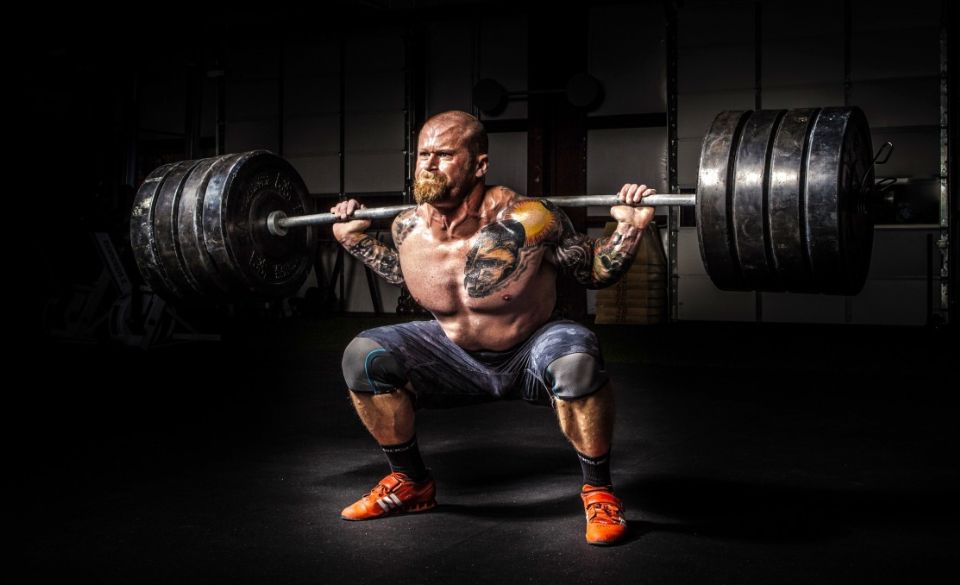
Why Do Some Power Lifters Bleed During Max Lifts
Page Contents
Many strength athletes have either experienced or witnessed instances of bleeding during maximal lifts in their careers. While it’s not a common occurrence, it tends to happen most frequently when lifters take on supra-maximal loads or undertake extreme work that places significant stress on the body. In some cases, you may notice bleeding from areas like the nose, ears (although rare), and the scalp (least common).
For those who are not familiar with weightlifting, witnessing this phenomenon can appear otherworldly and leave them in awe, exclaiming, “Oh my gosh,” or even using it as a reason not to engage in lifting. Seasoned strength athletes, on the other hand, recognize that there’s always a degree of risk associated with heavy lifts. Therefore, it’s often less surprising to those who are actively lifting compared to those who are mere spectators.
Factors Contributing to Bleeding During Maximal Lifts
Blood Pressure
When lifting heavy weights, it’s important to understand that blood pressure temporarily increases during the lift. While consistent weightlifting can help maintain healthy blood pressure over time, the act of performing maximal lifts can lead to a momentary spike in pressure. This increase is due to factors such as an elevated heart rate, pressure on the body (particularly in the abdominal and thoracic cavities), and the significant blood flow required to execute the work.
It’s essential to note that blood pressure is influenced by various factors. For instance, elite powerlifters, often in the heavier weight classes, may carry extra body weight, which can naturally contribute to higher blood pressure. Factors like an athlete’s weight, lifestyle choices, and the intensity of their lifts collectively influence the likelihood of bleeding during maximal efforts. Recreational lifters who maintain a normal weight and lead a healthy lifestyle outside of the gym are less likely to experience bleeding during heavy lifts. Those concerned about bleeding during maximal lifts need not worry, as it is uncommon for individuals who are not at an elite strength level or in a peaking phase.
Valsalva Maneuver
The Valsalva maneuver involves deliberately manipulating the air within the body to create increased tension and pressure during weightlifting. This technique is often employed when a coach instructs lifters to inhale and hold their breath throughout a lift. The Valsalva maneuver results in elevated blood pressure and bodily tension by restricting the free flow of oxygen.
Powerlifting Gear
The use of powerlifting gear is another factor that can lead to increased pressure during maximal lifts. Powerlifting equipment such as knee wraps, deadlift suits, ammonia, and weightlifting belts is designed to enhance tension and pressure in the body. Occasionally, this extra gear can push lifters beyond their natural thresholds.
Type of Exercise
Certain compound movements that place a substantial demand on the body to maintain tension and pressure can contribute to instances of bleeding. Research conducted on blood pressure during heavy-resistance training has shown that squats and deadlifts impose the greatest strain on blood pressure. This is primarily due to the pressure these movements exert on the thoracic and abdominal regions.
Environment
Although a minor factor, the training environment can also play a role in the likelihood of bleeding during lifts. For instance, training in dry and cold settings or at high altitudes can make lifters more susceptible to experiencing bleeding.
Nutrition
While less common, a lifter’s diet can potentially influence their susceptibility to bleeding during lifts. For instance, individuals with deficiencies in vital nutrients like vitamin C, K, B-9/12, and iron may be more prone to bleeding. While this factor is less likely, it is worth considering if someone frequently experiences issues like nosebleeds.
Factors to Consider and How to Manage
To conclude our discussion, Gaglione emphasizes the reality of bleeding during maximal lifts and highlights the distinction in the occurrence of bleeding between elite athletes and recreational lifters.
Infrequency of Occurrence
Gaglione underscores that recreational lifters and even novice powerlifters need not be overly concerned about experiencing bleeding during heavy lifts. Instances of lifters bleeding, while occasionally sensationalized in videos, are rare and should not deter individuals from pursuing weightlifting or powerlifting. As mentioned earlier, the average powerlifter or recreational lifter is far less likely to encounter any form of bleeding during their lifts.
Inherent Risks and Critical Phases
Similar to most sports, weightlifting and powerlifting entail inherent risks. The sport of powerlifting centers around moving maximal loads and preparing for competitions. In this context, Gaglione points out that as a powerlifter advances in their training, there will always be some degree of risk associated with bleeding during maximum attempts. Importantly, he highlights that when executed correctly, this risk can be minimized.
Powerlifters who adhere to well-structured training programs tend to experience limited instances of bleeding, primarily during specific phases of their training cycles known as peaking phases. These phases are intentionally designed to be of short duration, usually in preparation for competitions. It is crucial to understand that while there is indeed a risk, effective planning and strategy can reduce this risk to a brief and manageable occurrence.
Frequently Asked Questions – (FAQ)
Why do I bleed when lifting weights?
Bleeding during weightlifting can occur in rare instances and is often related to factors like increased blood pressure during maximal lifts, the Valsalva maneuver, or the use of powerlifting gear that creates extra tension and pressure on the body. It’s not a common occurrence and typically happens under extreme conditions or with advanced lifters.
Why do some bodybuilders bleed?
Some bodybuilders may experience bleeding during intense weightlifting sessions for similar reasons as powerlifters. The use of heavy weights, techniques like the Valsalva maneuver, and the overall intensity of training can contribute to rare cases of bleeding. However, it is not a common occurrence in the bodybuilding community.
Why do powerlifters bleed when lifting?
Powerlifters, who focus on lifting maximal loads in competition, can also experience bleeding due to the extreme demands placed on their bodies. This can result from factors like increased blood pressure during lifts, the Valsalva maneuver, and the use of powerlifting gear. It’s not a typical outcome but can occur in certain situations.
Is heavy lifting bad for your heart?
Heavy lifting, when performed with proper form and within one’s capabilities, is generally not considered bad for the heart. In fact, resistance training can have cardiovascular benefits by improving heart health and reducing the risk of heart disease. However, lifting extremely heavy weights beyond one’s capacity or with improper form can potentially lead to spikes in blood pressure, which may not be advisable for individuals with certain heart conditions. Consultation with a healthcare professional is essential to assess the suitability of heavy lifting based on individual health factors.
Does weight lifting harden arteries?
Weightlifting, when performed with proper form and technique, is unlikely to harden arteries. In fact, regular resistance training can contribute to improved cardiovascular health and a reduced risk of atherosclerosis, a condition characterized by the hardening and narrowing of arteries.
What does an overworked heart feel like?
An overworked heart may be associated with symptoms such as palpitations (rapid or irregular heartbeats), shortness of breath, chest pain or discomfort, fatigue, and a sensation of the heart racing or pounding. These symptoms can occur during or after physical activity and may indicate an underlying heart condition. If you experience these symptoms, it’s crucial to seek prompt medical attention to assess and address any potential heart issues.
Final Words – Why Do Some Weight Lifters Bleed During Max Lifts
In conclusion, while bleeding during maximal lifts may captivate the attention of spectators and appear astonishing to the uninitiated, it remains a relatively rare occurrence in the world of strength athletes. The likelihood of experiencing such incidents significantly varies between elite powerlifters and recreational lifters.
Factors contributing to bleeding during heavy lifts include increased blood pressure, the Valsalva maneuver, the use of powerlifting gear, the type of exercise performed, environmental conditions, and, to a lesser extent, nutritional deficiencies. These factors collectively influence the risk of bleeding during maximal efforts.
Recreational lifters and novice powerlifters need not be overly concerned about bleeding during their training. Such incidents are infrequent, and the average lifter is far less likely to encounter them. It is essential to recognize that, like any sport, weightlifting and powerlifting come with inherent risks. As powerlifters progress in their training, there will always be some degree of risk associated with bleeding during maximum attempts. However, with proper planning and execution, this risk can be minimized.
In summary, while the sight of bleeding may be intriguing, it should not deter individuals from pursuing their weightlifting or powerlifting goals. With careful management and an understanding of the contributing factors, lifters can continue to push their limits and achieve their strength aspirations.



